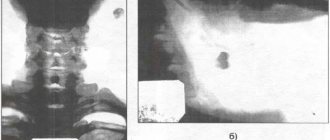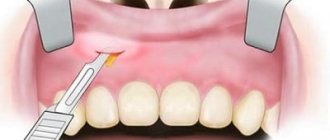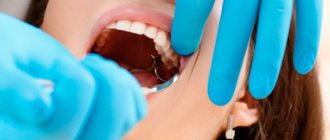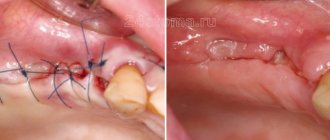Implantation after removal of a tooth with a cyst is the dream and ultimate desire of a maxillofacial surgeon. But ideal treatment is hampered by two problems: installing an implant in compromised, infected bone and hidden pieces of cyst lining that are forgotten in the bone.
Medical experts from the Department of Surgical Dentistry and Oral and Maxillofacial Surgery of the Moscow State Medical University drew attention to the increasing number of cases of patients with rejected implants at points bordering unhealed cystic bone defects. The statistical work carried out showed a threefold increase in such complications in Moscow clinics compared to 2014.
What can and cannot be done after tooth extraction
- What to do after tooth extraction
- What to do after wisdom tooth removal
- What not to do
- What do we have to do
- What to do after tooth root removal
- Baths after tooth extraction
- What to do after a child’s tooth extraction
- What to do after removing a tooth with a cyst
- Temperature rises after tooth extraction
Tooth extraction is a major dental operation.
The recovery period after such a procedure can take some time and last from three days to seven days. There are indications and contraindications for what measures the patient needs to take to ensure that the rehabilitation process goes as quickly and successfully as possible. If you strictly follow the dentist’s recommendations and the general rules of the postoperative period, you can significantly bring the moment of recovery closer and avoid unpleasant or even dangerous complications. Rules of conduct during recovery after a doctor has pulled out a tooth may differ depending on the severity of the operation performed, its type, the general health of the patient, his habits and age.
However, there are general recommendations that are relevant for any postoperative situation.
Why is a dental cyst dangerous?
First of all, the cyst adversely affects the functioning of bone tissue. Due to the large number of inflammatory mediators, osteoclasts are activated and the gum bone cells around the cyst are gradually destroyed. Also, as the cavity grows, it can affect neighboring healthy teeth, which ultimately leads to the immediate loss of a significant area of the dentition.
The main complications of an untreated dental cyst:
- Purulent inflammation of the cyst (for a long time the formation is in a state of sluggish infection, but the addition of new bacterial agents leads to a serious pathological process);
- Melting of the bone tissue of the jaw (most often quite extensive, unfavorable for treatment);
- Germination into the maxillary sinuses with the development of an inflammatory process there (chronic sinusitis);
- Osteomyelitis or periostitis of the jaws due to constant infection from the cyst cavity;
- Abscess formation of a cyst with the formation of a cavity in the cheek or gum, requiring immediate surgical intervention;
- Development of phlegmon of the neck (dangerous, diffuse purulent inflammation of the skin and subcutaneous fat, which tends to progress and cause sepsis);
- Development of blood poisoning or sepsis due to a source of persistent infection;
- Spontaneous fracture of the maxillary or mandibular bone due to thinning of the tissue.
Early detection of a dental cyst and its treatment make it possible to avoid these complications and successfully eliminate the danger. But, as a rule, at the time of discovery, the cyst has time to thin out the bone tissue, at least a little, which may require bone grafting.
What to do after tooth extraction
After the dentist has completed all removal procedures, the patient must take the following measures:
- The tampon that the doctor placed on the hole must be removed no later than half an hour later. If the patient has poor blood clotting, you can keep the compression pad on for 60 minutes;
- To reduce the likelihood of swelling of the soft tissues of the mouth or face, it is advisable to apply something cold to the cheek. This treatment measure will be effective only in the first hours after surgery. A piece of ice or frozen meat wrapped in cloth should be applied to the cheek several times for 5 minutes;
- On the first day, to avoid inflammation, you can do antiseptic baths;
- It is necessary to gently, carefully, but carefully carry out all hygiene procedures in the oral cavity, not excluding the area where the tooth was pulled out.
Compliance with these rules after removal will promote rapid healing of the hole and prevent infection.
How to remove a tooth cyst?
Treatment of dental cysts can be therapeutic or surgical. The first method is used quite rarely due to the large percentage of diagnostics at later stages. As for surgery, the cyst can be removed in several ways:
- Cystectomy. One of the most time-consuming options for solving a problem that brings the most favorable results. During surgery, the cyst itself along with its contents, as well as the damaged part of the tooth root, are removed. In this case, a single-rooted tooth is filled, and if there are several roots, then removal is carried out. Then it is possible to carry out prosthetics with preliminary bone grafting.
- Cystotomy. In this case, only one (front) wall of the formation is removed, due to which it communicates with the oral cavity. The contents of the cyst are removed and the cavity is disinfected. The procedure has one significant drawback - a very long healing period.
- Hemisection. The simplest and most radical way to deal with dental cysts. This manipulation involves excision of the cyst itself, the tooth root along with the tooth itself, as well as surrounding tissues affected by infection.
Modern dentistry also uses a laser method for treating dental cysts, which is considered less traumatic and risky. However, some advanced cases of the disease require solely surgical intervention.
What to do after wisdom tooth removal
The third molar is usually pulled out due to inflammation that appears around it. At the same time, pus and infectious agents are likely to get into the wound. Therefore, in the postoperative period, the patient must follow general recommendations, as well as be as attentive as possible to his feelings, and note the slightest changes in his condition.
As soon as the hole stops bleeding, you should immediately remove the compression tampon. Its presence in the wound provokes the proliferation of bacteria and increases the likelihood of the onset of an inflammatory process.
The patient should be prepared for the fact that his gums will hurt for 3-5 days after the procedure. You need to purchase recommended anesthetics and take them on schedule. If the pain syndrome has become stronger, swelling of the face and gums increases over the course of several days, the elevated temperature does not subside, and an unpleasant odor begins to come from the socket, you need to call the dentist.
Is implantation possible?
The decision about surgery is made by the attending physician based on the clinical picture as a result of diagnosis. The method of implantation depends on the size of the tumor:
-
the root cavity
is small The specialist selects a method of one-stage implantation
. - With a significant size
of the cyst, the inflammatory process invades neighboring roots.
Due to the high risk of complications, installing an implant in a fresh socket is unacceptable
.
Rupture of a large cystic formation during removal provokes spillage of purulent contents and tissue infection. It is impossible to install an implant in pus. A large cyst leads to resorption of the jaw bone. If its volume is insufficient, the titanium root cannot be firmly fixed in the jaw.
The diseased tooth and cyst are removed, and drainage is installed to drain the pus. After the time required for tissue healing, osteoplasty is performed to replenish the lost volume of the jaw. The implant can be installed using a two-stage or one-stage protocol.
Dental implantation after cyst removal using the traditional method with bone restoration takes a lot of time, but is considered more reliable. The operation is performed only after eliminating inflammation, which reduces the risk of rejection of the titanium support. With a delayed procedure, the patient’s health has time to fully recover.
What not to do
In order to avoid any complications after surgery to remove any tooth, you must follow the following rules:
- Do not eat or drink anything for 3 hours after surgery;
- It is not recommended to eat hot, spicy, hard and fine-grained foods, or drink hot drinks. The load when chewing food must be transferred to the healthy side of the jaw;
- For 3 days, limit physical activity and procedures that increase blood pressure or increase blood flow. Do not take hot baths. Bathhouse, sauna, solarium, visiting the beach are prohibited;
- Do not touch the hole with your tongue, finger, toothbrush, or toothpick;
- Do not rinse your mouth;
- Do not ignore the advice, recommendations and prescriptions of the dentist. Do not violate your medication schedule.
If the patient has any doubts about his condition or questions for the doctor, he should not put off calling the clinic “for later.”
What do we have to do
After the removal procedure, you need to limit your activity for a while, adhere to a healthy lifestyle and diet.
It is better to take the so-called “sick leave” - spend time at home in a calm environment, closely monitoring your condition.
Smoking and drinking alcoholic beverages are prohibited; it is better to abstain from them.
The menu for the recovery period should consist of nutritious food that does not require thorough chewing. It is better to reduce the number of meals by increasing the calorie content of dishes.
It is imperative to carry out hygienic procedures, since ignoring them can trigger an inflammatory process in the socket of an extracted tooth.
Mouth rinsing is prohibited; it is better to replace it with medicinal baths.
You need to make sure that the postoperative sutures do not come apart; to do this, you should not open your mouth wide or strain your facial muscles.
Healing of the socket with gum inflammation
If tooth extraction was carried out against the background of inflammation, or the inflammatory process in the gums developed later, epithelization of the wound begins on the 10th -14th day, bone beams appear only by the 15th day. A significant part of the socket is filled with young osteoid tissue only by the end of the second month.
After a complex tooth extraction, when the gums rupture and the walls of the socket are traumatized, the edges of the gums cannot come together for a long time and the epithelization process slows down. Wound healing can only be completed after 1-1.5 months. In this case, the development of new bone tissue is delayed.
What to do after tooth root removal
Root removal is often accompanied by circumstances that complicate the dentist’s work and can negatively affect the duration and course of the recovery period.
In order for rehabilitation to progress at a normal pace and tooth reconstruction to begin, the patient must follow the rules of the recovery period.
First of all, it is necessary to avoid the occurrence of inflammation in the area of the torn root. For this you will need:
- Observe the rules of personal hygiene;
- Do not overheat the head area;
- Do not rinse or touch the affected area with your tongue;
- Do medicinal baths, take painkillers, start taking antibiotics if the doctor gives such a recommendation.
You should try to protect the area of the torn root as much as possible, since any infectious process at the site of removal can lead to serious complications.
How to speed up the healing of a hole
To speed up the healing of the hole after tooth extraction, you need to follow these rules:
- Do not touch the blood clot on the socket with your tongue, much less with your hands or a toothpick, so as not to damage it. The presence of a clot is a guarantee of speedy healing of the wound.
- For three hours after visiting the dentist, you should not eat or rinse your mouth. Compliance with this point will also help maintain the integrity of the blood clot.
- · Drinks and food should not be too hot or cold for several days after removal. The food chosen is soft, without coarse inclusions, to prevent injury to the gums.
- You should not engage in heavy physical work for several days to avoid opening the wound and resuming bleeding.
- Since tobacco smoke and alcohol irritate the mucous membrane and inhibit the healing of the hole, you need to stop smoking and drinking alcohol for a while.
- To prevent infection from entering the wound and reduce inflammation after a traumatic tooth extraction, antiseptic baths are used. For them, solutions of chlorhexidine or furatsilin, infusions of sage, chamomile, and eucalyptus are used. The solutions are taken into the mouth, held for several minutes and carefully spat out.
- On the third day after removal, you can carry out antiseptic rinses with the same agents.
- Taking anti-inflammatory drugs (nimesulide, ibuprofen) will help not only eliminate pain, but also relieve the inflammatory process, which also helps accelerate socket regeneration.
- If the doctor has prescribed antibiotics, you should not refuse them, since eliminating the microbial infection shortens the healing time.
- When brushing your teeth, be careful not to touch the wound with the brush.
- To speed up healing, you can use Solcoseryl dental paste. It enhances intracellular energy exchange, due to which cell regeneration and restoration of damaged tissues are accelerated. Solcoseryl also creates conditions for the growth of granulation tissue. The paste is applied to a previously dried surface, then moistened with water. Before using the medicine, it would be more correct to ask your dentist about when to start using Solcoseryl after tooth extraction and how many times a day to apply it to the gums.
Baths after tooth extraction
Since rinsing after the removal procedure is prohibited, it is necessary to make baths.
Doctors usually recommend making baths using soda and salt, medications or decoctions of various medicinal herbs. For these purposes, drugs such as Miramistin and an aqueous solution of Chlorhexidine are suitable.
The procedure is easy to carry out. You just need to put a small amount of bath liquid in your mouth, tilt your head so that the liquid moves to the area of the pulled out tooth, and freeze in this position for 30-60 seconds. There is no need to take any active action; the medicinal solution should simply gently wash the damaged gum tissue. After this, the liquid must be spat out.
Antiseptic or therapeutic baths are recommended to be done every 3 hours during the day, preferably after eating and cleansing the mouth.
After the patient has taken a bath, it is advisable not to eat any food or even drink for 1 hour.
What to do after a child’s tooth extraction
After removing a child’s baby or molar teeth, parents should closely monitor the baby’s condition and well-being.
It is necessary to ensure that the child follows the following rules:
- Do not rinse your mouth or spit, as this may cause the blood clot to be removed from the socket;
- Did not engage in vigorous physical exercise and did not overheat;
- Brush your teeth efficiently and responsibly, avoiding the injured area with a brush;
- Take the necessary medications in full and according to the schedule established by the doctor;
- Carefully and promptly made baths with antiseptic or medicinal products;
- He did not put any foreign objects in his mouth and did not touch the socket with his fingers or tongue.
The child’s body temperature, swelling of soft tissues and the child’s breath must be monitored. In case of complications, consult a doctor immediately.
What to do after removing a tooth with a cyst
After the doctor removes a tooth with a cyst, you need to follow the general recommendations of the recovery period, but pay special attention to reducing the likelihood of infection of the wound.
In the initial period after the procedure, it is necessary to cool the sore side of the jaw by applying 3-4 cold compresses. Next, you need to ensure that the operated part of the face does not overheat. It is forbidden to make warming compresses, take hot baths, or sunbathe. For pain relief, you can take medications prescribed by your doctor.
It is necessary to avoid injuring the healing hole - the food is soft or liquid, not hot; brush your teeth as carefully as possible; Do not rinse your mouth. It is necessary to limit physical activity and monitor local and general temperature. If pain, high body temperature and swelling lasts more than 2 days, consult a doctor. If pus begins to discharge or there is an unpleasant odor coming from the hole, consult a doctor immediately.
Experts' opinion
Question: Is it possible to avoid the occurrence of a cyst on a tooth?
Answer : The etiology of the formation of a cyst at the root of a tooth can be different. At the initial stages, treatment of this pathology does not pose a serious problem. Therefore, it is very important to be regularly examined by a dentist, and also to take x-rays or visiography at least once a year to identify any pathologies of the dental system. New growths, if present, will also be visible on the images. To reduce the likelihood of tumors appearing, if any diseases of the oral cavity and nasopharynx occur, it is necessary to treat them in a timely manner: develop the habit of regularly rinsing your mouth with antiseptics, and learn to brush your teeth correctly. Maintaining a healthy lifestyle, a balanced diet, a strong immune system and preventive dental examinations are the key to dental health.
Question: Is it possible to get rid of a cyst on a tooth at home on your own?
Answer : We do not recommend self-medication if you have any pain or unpleasant symptoms in the oral cavity. Any discomfort may be a sign of a serious illness that requires medical attention. If it is not possible to urgently visit the dentist, then to reduce pain you can use the following rinses: herbal decoctions (yarrow, calendula, sage, chamomile, oak bark), a solution of baking soda or salt, vodka, tea tree essential oil. This may help reduce pain, but in any case you should see a doctor as soon as possible.
Temperature rises after tooth extraction
A slight increase in general body temperature or local temperature in the area of the operation is considered normal. This is the body's natural reaction to dental surgery.
If the temperature stays within 37-38° C, there is no need to bring it down. If it rises above 38° C, you need to take antipyretic drugs. Avoid using aspirin as it may cause bleeding from the socket.
An increase in temperature over a long period (2 or more days in a row), accompanied by signs of inflammation - severe pain, swelling, swelling of soft tissues, an unpleasant odor from the wound, are direct indications for urgent medical attention.
What is the “insidiousness” of pathology?
The tumor develops slowly. The cavity gradually increases under the pressure of the produced pus. In the early stages it is difficult to diagnose, since the symptoms are not clearly expressed and occur periodically (with exacerbation). Signs of pathology:
- pain when biting;
- discomfort when palpating the gums;
- swelling of the gums and face;
- increase in body temperature.
If the tumor grows, bone deformation is possible. The bone tissue of the upper jaw is porous, so resorption occurs quickly, with pronounced deformations. Large cysts of the molars and premolars of the upper jaw often occupy the entire volume of the maxillary sinus.
Formation on the root of the tooth complicates subsequent implantation:
- During removal, there is a risk of damage to the tumor membrane. Then its contents spill out onto the surrounding tissues, and the infection spreads.
- For large cystic tumors, osteoplasty is required before implantation to restore bone deficiency and ensure reliable fixation of the artificial root.











